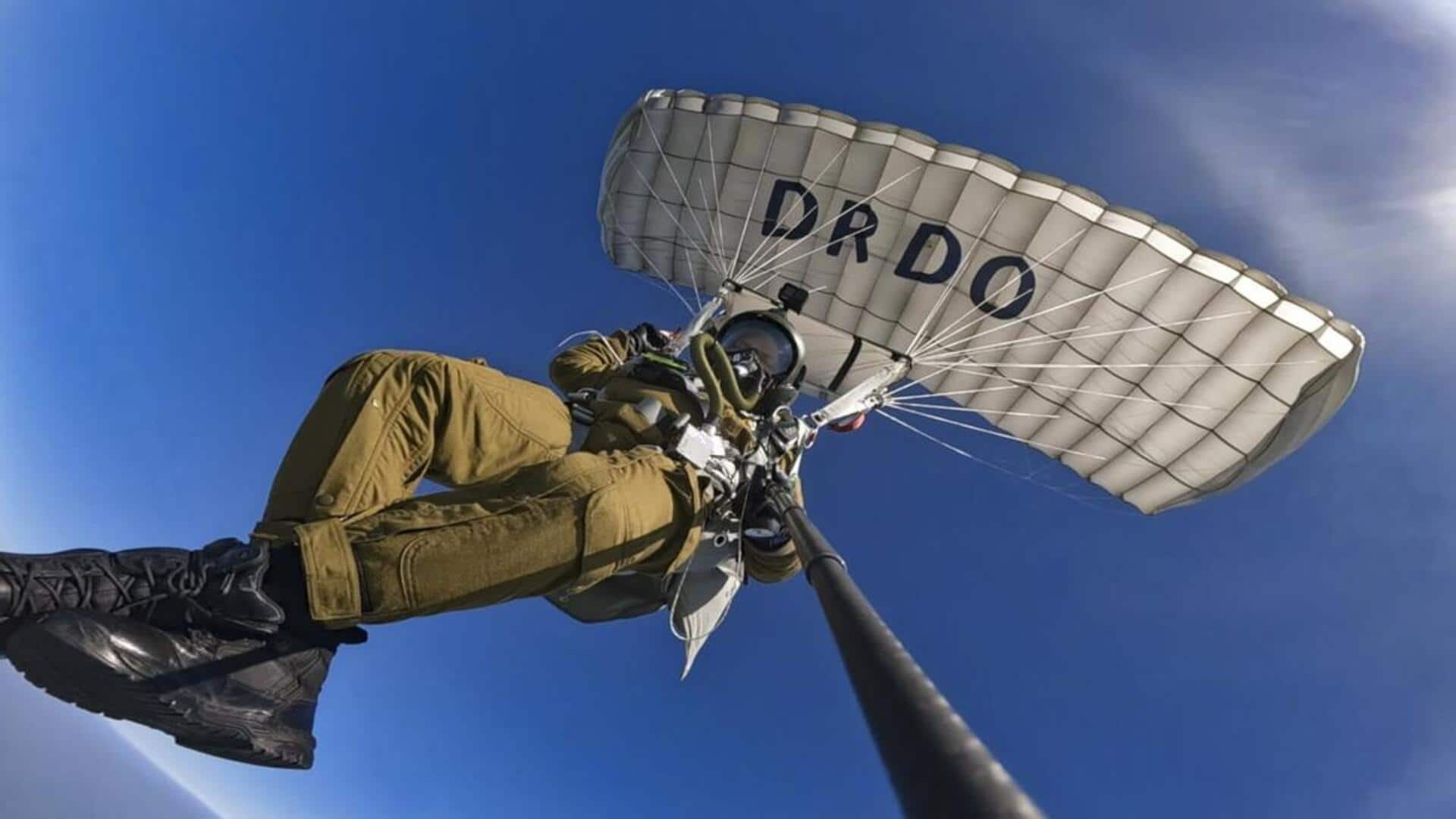
IAF tests indigenously developed parachute system at 32,000 feet
What's the story
The Indian Air Force (IAF) has successfully tested the Military Combat Parachute System (MCPS) at an altitude of 32,000 feet. The parachute system, which was indigenously developed by the Defense Research and Development Organization (DRDO), is currently the only one in operational use by the Indian armed forces for deployment above 25,000 feet.
Technical specifications
MCPS developed by 2 DRDO labs
The MCPS was developed by two DRDO laboratories: Aerial Delivery Research and Development Establishment in Agra, and Defense Bioengineering and Electromedical Laboratory in Bengaluru. The system comes with advanced tactical features like a low descent rate and improved steering capability. This allows paratroopers to jump from aircraft safely, deploy parachutes at pre-defined altitudes, navigate accurately, and land at designated zones.
Strategic advantage
Compatible with NavIC satellite navigation system
The MCPS is also compatible with Navigation with Indian Constellation (NavIC), an indigenous satellite navigation system. This feature gives the Indian armed forces the freedom to use it against any adversary of their choice, without worrying about outside interference or denial of service. The successful test of this system has opened doors for the induction of more indigenous parachute systems in the future.
Independence boost
Successful test demonstrates self-reliance in aerial delivery systems
The MCPS's indigenous design will ensure maximum utility over its lifetime, as it requires minimal turnaround time for routine maintenance and repair compared to imported equipment. This will also reduce India's dependency on other nations for serviceability during conflicts or wars. Defense Minister Rajnath Singh congratulated DRDO, the armed forces, and the industry on this successful demonstration of self-reliance in aerial delivery systems.